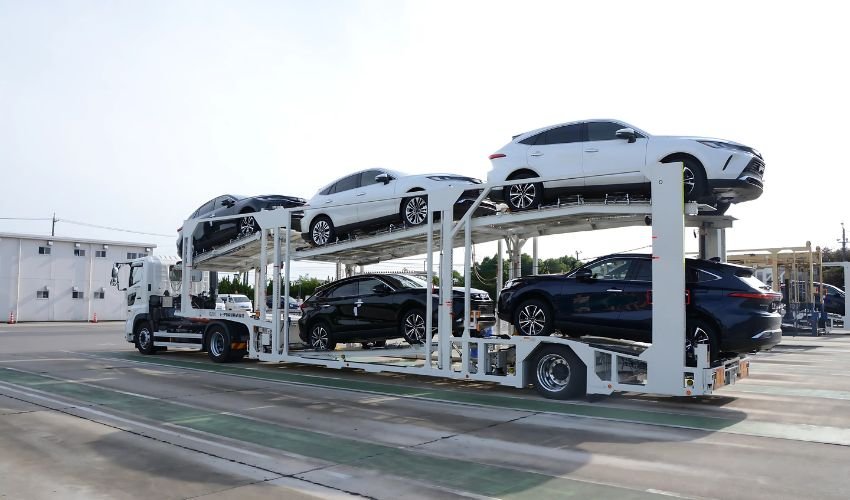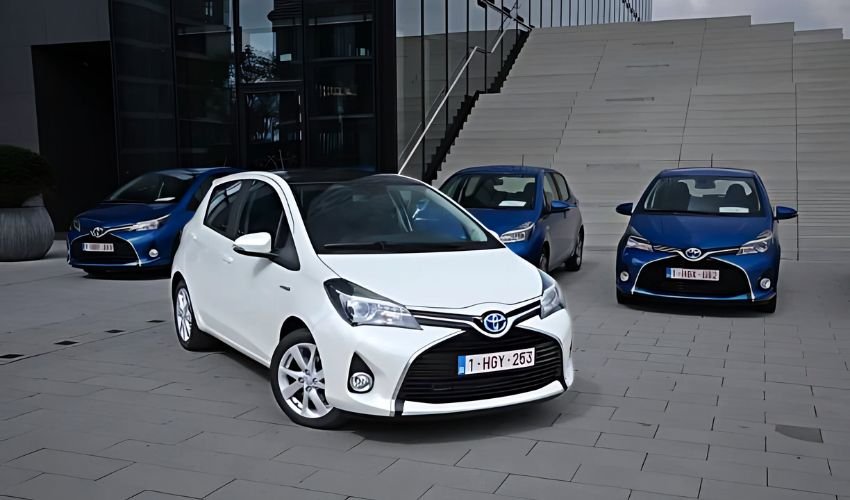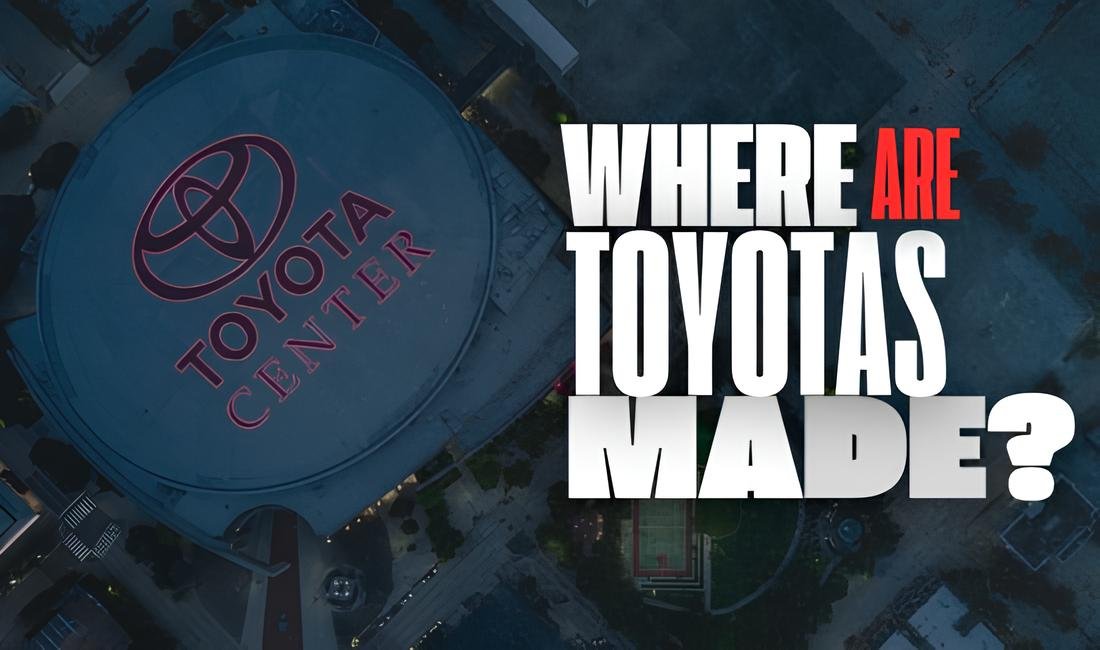Toyota has been a renowned automobile manufacturer since 1935, producing the most reliable and safest vehicles across the globe. Millions of units annually are produced by Toyota, from compact cars to SUVs and further up the scale to luxury models.
But ever wondered where are Toyotas made? Toyota manufacturers all around the world but are they the same quality or is there any difference?
Understanding where Toyotas are made provides susceptible information about the brand’s global strategy and operational capability supported by several intricate supply chains for production. Here’s a brief article on the production of Toyotas as well as the questions regarding the topic.
Where Is Toyota Manufactured?
Toyota manufactures cars in Japan, and 26 other countries across four continents, including the USA, Canada, Mexico, Argentina, China, Philippines, Indonesia, UK, France, Turkey, Kenya, and South Africa.
The primary manufacturing hub is Japan, where Toyota operates 16 factories, most of the high-end cars, including Land Cruiser, Camry, and Prius.
Outside of Japan, Toyota also has huge bases set up for manufacture in North America’s key territories, the United States and Mexico, where higher-demand cars are built on production lines that include but are not limited to RAV4s and Tundras.
Besides, Toyota has manufacturing units across Asia in countries like Indonesia, Thailand, and India, in Europe with facilities in the UK, France, and Turkey, and in Africa with operations in South Africa. This enables Toyota to respond to regional market demand with high-quality standards on all its products.

Toyota Production Network
| Continent | Country/State |
| Asia | Japan, China, Taiwan, India, Indonesia, Malaysia, Pakistan, Philippines, Thailand, Vietnam |
| North America | Canada, USA/ Kentucky, Indiana, Texas, Mississippi, Alabama, West Virginia |
| Europe | France, Austria, Czech Republic, Portugal, Turkey, United Kingdom/ Derbyshire, North Wales, Nord-Pas-de-Calais |
| Oceania | Australia |
| Africa | Kenya, South Africa, Egypt |
You May Also Read: Toyota Crown Signia Complete Review
Which Toyotas Are Made In The US?
Over the years, Toyota has established a strong manufacturing presence in the United States-manufacturing some of the most popular models in-house.
The notable ones include the Toyota Camry, which is majorly assembled at the Toyota Motor Manufacturing plant in Georgetown, Kentucky. The Toyota Corolla is also built in the U.S., specifically at the Toyota Motor Manufacturing facility in Blue Springs, Mississippi.
The US also manufactures the Toyota Highlander and Sequoia in Princeton, Indiana, while the Toyota Tundra and the Tacoma are assembled at the company’s San Antonio, Texas plant.
The minivan Toyota Sienna offering a hybrid powertrain is assembled there as well. In addition, it produces the Toyota Grand Highlander, which features higher capacity compared to Highlander in Indiana. This local manufacturing means a higher appeal for these models among U.S. consumers as well as better resale value because of the domestic production.
Check Where Your Toyota Model Is Built.
The origin of your Toyota model can be found in the Vehicle Identification Number-VIN-that gives information on the origin of the vehicle. VIN is a unique code given by the companies to the specific vehicle, it contains digits and characters giving the information to identify the model.
The first character of the VIN is the country of manufacture. For example “J” means it was manufactured in Japan, while “1”, “4”, or “5” would mean it was manufactured in the United States. All examples of VIN include…
| J: Japan | 4, 5: USA |
| N: Turkey | 6: Australia |
| Y: France | 7: New Zealand |
| 2: Canada | 8,9: South America |
| 3: Mexico |

How Many Toyotas Exist Worldwide?
In 2023, Toyota achieved a remarkable cumulative global production total of 300 million vehicles, setting it as the largest automaker in the world. Top-selling models include the almighty Corolla, RAV4, Camry, and Highlander.
As of 2024, the company’s production strategy has increasingly focused on hybrid and electrified vehicles, Toyota sold more than 454,000 electrified vehicles in the first half of 2024, which is by far 38.3% of the total sales volume. You can get the detailed data here.
This extensive production network not only underscores Toyota’s commitment to meeting global demand but also highlights its adaptability in responding to market trends, such as the growing interest in environmentally friendly vehicles.
Also Check: Luxury Cars Under $30k
Are Japanese-Built Toyotas Better?
Toyota is always known to keep the reliability and lifespan of their vehicle equally good in every model. But is it true that Japanese-assembled Toyotas use better quality components and are more durable than the vehicles manufactured in the US?
I can’t exactly determine whether the Toyotas built or assembled in Japan are better, because there’s no reliable information to back this up. But as the engineer himself in the video I have embedded above, there’s little to no difference in terms of reliability. Both are equally reliable.
If we’re talking about the quality, I’d say that Japanese-assembled models are definitely better compared to the US. The attention to detail is visible with better panel gaps, alignment, and overall finish.
However, these often go unnoticed by the average consumer, since Toyota has strict quality for any vehicle produced at any location. Thus, while there may be preferences for Japanese-built models among car buyers, the overall reliability and quality of Toyota vehicles remain commendable across the board.
Wrapping Up
In the end, Toyota will always be my favorite as a family vehicle. The durability is amazing compared to any of its rivals, with the insane resale value that Toyota provides.
With manufacturing plants across the globe, Toyota continues to outshine the world rankings with its huge consumer base. While the core manufacturing is still located in Japan, where best-sellers such as the Camry and Prius are built, extensive operations in the United States, among other countries, ensure supply to meet demand for popular models like the RAV4 and Corolla.
This wide network not only sustains local economies but also enables Toyota to draw on regional expertise and preference for its leading reputation as an automaker. Knowing where Toyotas are made provides a good overview of the operational strategies and quality assurance measures underlying its vehicles, thereby helping to reinforce consumer confidence in the Toyota name.




